Review for Freedom: The Complete Collection
Introduction
Freedom is here at last, again. Beez Entertainment originally released it on Blu-ray, although that four-disc release was a strictly limited edition, hard to find now. Manga Entertainment have licence rescued Freedom, and are re-releasing it, this time with all the content squeezed onto a single Blu-ray disc. To give the package added value, Manga Entertainment release the Blu-ray as a dual play special edition, with the two-disc DVD edition, making its UK debut, included in the deluxe packaging, along with some very special art cards. You can also see Freedom on DVD without all that high definition nonsense if you want, as Manga will also release the Freedom DVD separately. This is the review of that DVD collection. The Blu-ray is reviewed elsewhere on the site.
It's the 23rd Century. Man was about to embark on his grandest adventure, having left the confines of Earth, established bases in orbit and on the Moon, and about to terraform Mars. Then in 2101, the Freeport space station fell from orbit, crashing into Earth, devastating the environment and wrecking the climate. The people that survived the accident practically wiped each other out in the subsequent wars, fighting over what few resources remained. The terraforming project was abandoned, and man retreated to the far side of the moon, where the Eden base was. Since then it has become the last surviving bastion of mankind, millions of inhabitants living and prospering peacefully in carefully regulated domes, following constructive, organised, and carefully regulated lives.
That's the ideal of course, but for some, such strictures are a little too stifling, and as usual it's the teenagers. Takeru wants to race bikes in order to impress girls, and with his friends Kazuma and Bismarck, he's souping up a battered old tricycle to take on his archrival Taira. Of course over-exuberance gets him into trouble, and he winds up doing community service outside the domes. He happens to be there when what looks like a meteorite impacts nearby, but examining it he finds a collection of manmade objects, a message in a bottle, a picture of a girl and a couple of lines stating that Earth is safe, and asking if anyone is out there. The government of Eden has been lying to them. To learn the truth, Takeru and his friends will need a little Freedom. Fortunately there is still some in Eden, literally, a small part of the base called Freedom where those who don't conform to societal ideals are tolerated to live. An old astronaut friend of Bismarck's named Alan runs the settlement, and he may know how to get the boys to a world that everyone has been telling them has been dead for a hundred years.
All seven episodes of Freedom are presented on a dual layer DVD disc from Manga Entertainment. A second disc contains all the extra features.
Picture
I was scratching my head for a minute or two with this one. The image is clear and sharp, free of ghosting, blended frames, but runs exactly the same length of time as the Blu-ray, indicating an NTSC-PAL conversion. Frame advance eventually revealed how this transfer was created. It is the lowest, cheapest, and most expedient method of doing NTSC-PAL. Basically every 24th frame is duplicated to make the 25th frame necessary for PAL, without reducing the run time, or the image resolution. It looks great when paused, but judders constantly during playback, especially during pans and scrolls. It's not something that I would choose to watch, but I found that given enough time, I could tolerate it.
It's a shame about the standards conversion as the anime itself is stupendous quite frankly. With most anime these days getting proper PAL transfers, Freedom really should have had the same treatment. It takes a leaf from films like Vexille and Appleseed and delivers computer generated, cel shaded characters, but Freedom's cel shaded characters blows those of the other films away. It's because they adhere much more closely to the anime style, look more like traditional 2D characters, and you see that the CG animation has really only been used to get them moving and interacting with their environments. Otherwise, this may as well be a traditional 2D animation. The character designs may be traditional, but the richness and complexity of the world design is astounding. Again, comparing it a recent CG space anime epic, Fumihiko Sori's TO, it may lack the attention to detail and the sci-fi grandiosity, but Freedom offers a lived in, appealing and very tactile universe. Its technological creations and environments may be simpler, but somewhat perversely, this makes them feel more real. It's because they help you forget the technicalities of the animation and let you appreciate the story.
Sound
The DVD offers you audio in both DD 5.1 English and Japanese with translated English subtitles. The surround audio on this disc does offer a little presence and effect, giving a little immersion into the world of Freedom, but in comparison to the Blu-ray's DTS audio it sounds quite weedy and flat. The original language audio is just fine, with the characters appropriately cast and performed. I sampled the English dub as well, and found that too to be of a high standard, although with the technical quality of the animation so much higher than that of traditional 2D animation, I found that lip sync wasn't as easy to match as conventional lip flaps. The subtitles are timed accurately and free of error.
Extras
Freedom is presented on 2 discs with animated menus on disc 1 with the episodes. You have a play all option, or you can select each episode individually. The subtitles are of the UPOP restricted type. You can't switch them on and off during playback, but will have to exit to the main menu to do it from there. You can switch audio on the fly though.
The extras for Freedom are all presented on Disc 2.
There are a whole lot of trailers, promo videos and commercials on this disc, running to about 90 seconds apiece. There is an Introduction Trailer to the series, the 7 Freedom Digests offer quick summaries of the episodes, and there are the Next Episode Trailers.
Other short clippettes worth watching include the Another Vehicle Race segment that combines the animation with real world footage, an LTV race on modern Japanese streets. The Nissin Cup Noodle TV Commercial Digests offer 90 seconds worth of promo footage for the show. This really is worth watching, as most of it is made up of deleted or rather alternate footage that doesn't appear in the actual story.
Freedom: The Hope is another 90-second bike race scene, which offers a fantastic coda. Messages From The Characters last 2½ minutes, and has the show's animated cast thanking you for watching the show, in their own personal styles.
The meaty stuff is almost hidden amongst all the promo footage, but is well worth seeking out. Talking About Freedom Session 1 (17½ mins), and Session 2 (21 mins) sees director Shuhei Morita, series planner Dai Sato, and scenario support Gichi Ohtsuka getting together first to talk about how the story came together, and what the ideas behind Freedom were, and then in the second segment to take a look back at the first three episodes, and talk a bit about the fourth episode which had just been released at that point, as well as to talk about the show's characters.
Freedom in the USA 1 lasts 11 minutes, and sees Dai Sato and Shuhei Morita pay a visit to Los Angeles and the 2007 Anime Expo, where they were promoting the HD-DVD release of the series. They also get to be totally underwhelmed when they go location spotting for the iconic route 66, which plays a part in episode 4.
Freedom in the USA 2 offers more location spotting, but this time is much more rewarding when they pay a visit to the Smithsonian Institute in Washington, and come face to face with the real history of space exploration that inspired the series. This lasts 13½ minutes.
Fly Me To The Moon 1 (The Apollo's Journey), and Fly Me To The Moon 2 (From Apollo to Freedom) together last 24 minutes, and offer a potted history of manned spaceflight, with significant emphasis on the Apollo programme that put man on the moon. It's an odd experience to hear a Japanese commentator almost get patriotic and proud for the US space programme.
Conclusion
Freedom is a classic sci-fi tale, albeit one heavily subsidised by product placement. You have to train your brains to accept cup noodles in every other shot, and that despite the story's insistence that the Earth and the Moon have been isolated from each other for over a hundred years, that the same company is still selling its hot water snack on both worlds. Little things like that would be called plot-holes in another reality, but here it's just advertising. After all, it was the thirtieth birthday of the snack manufacturer that financed this OVA series, gathering the best and brightest in the anime business to create an epic anime show. After all, character design from Katsuhiro Otomo, writers like Dai Sato, studio Sunrise behind the visuals, and a catchy theme song from Hikaru Utada, Freedom is the cream of the crop when it comes to production values and scope.
It's hardly an original set up though. Catastrophe and war destroys the Earth, with mankind surviving only on a lunar base, set up using the technology that was meant to be used to terraform Mars, for which the original base was meant to be a waystation. For the last hundred years, the people of Eden have been living strictly regimented and controlled lives, conforming to an ideal society, burdened by the knowledge that they are the last humans in the universe, and it's down to them to keep history alive. Of course against such strictures, some will rebel, and as usual it's the teenagers, so Eden has something of a safety valve for them to let off steam, a little organised rebellion that if it goes too far is punished by community service.
In true James Dean style, it's all about speed, about being reckless, and about racing. Takeru's the young boy who is trying to impress a girl by building a fast bike, and gazing up wistfully at the dead Earth (which in true Truman Show style is actually an image projected on the roof of the dome, as Eden is actually on the far side of the moon). It's when he gets punished for one of his transgressions with community service, working outside of the dome, that he learns that Eden has been lying to him, lying to them all. He finds a message in a bottle, the remains of a capsule that he witnesses impacting with the lunar surface, a few fragments of seashell, and a photo, a greeting from Earth. For the Eden government, it's a threat to their utopia, and a truth that must be stifled. For Takeru, who has instantly fallen in love with the girl in the photo, the teenage rebellion becomes real, as he decides that the truth has to be known, and that he needs to go to Earth to find out what really happened.
Secrets and lies, teenage rebellion against authority, and a whole bunch of sci-fi concepts and ideas that really appeal, make up Freedom. We follow Takeru and his friends on their quest to uncover the truth, which with the aid of the old astronaut Alan actually gets them as far as Earth itself. For the lunar visitors, it's like exploring an alien world, no dome, scary weather, weird animals, and even weirder humans. What starts off as an act of teenage defiance of authority, becomes a quest to reunite two worlds, the sundered halves of humanity, and by doing so bring back hope and ambition to both Earth and the Moon. But there's resistance to change on both worlds.
The story in Freedom is great; it's the sort of classic, sci-fi escapade that I grew up on, devouring novels like it from my local library. Its twists and turns, surprises and secrets do much to hold the attention. If that isn't enough, the animation is excellent, with the world design living up to the epic nature of the story, and the action sequences really appeal. The characters are fairly generic though, and their narrative journeys aren't exactly deep or meaningful. The teenagers act like typical teenagers, the authority figures are suitably draconian, the quirkier characters serve as comic relief, it's all pretty standard for an anime story. The downside is the length of the show, which at just seven episodes, eight if you count the final one as two, just hasn't the space to properly develop the characters and tell its story at the same time. Key events have to be hit on schedule, and if subtler little character moments fall by the wayside as a result, then so be it. Freedom would have worked much better as a full length story, or maybe even as a thirteen episode series, to properly develop the characters and show their growth and the adversities they face. Too often, important potential storyline was glossed over by a '2-years later' caption.
The Blu-ray had issues that I couldn't tolerate. That isn't a problem with this DVD release though, as while its NTSC-PAL standards conversion isn't ideal, it is possible to get used to the slight jerkiness and tune it out. After all, Freedom is the best space sci-fi anime series since Planetes, and it really needs to be seen and appreciated.
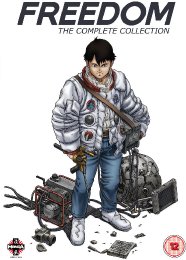
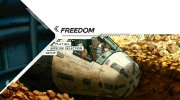
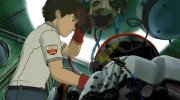

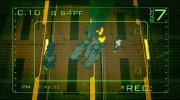
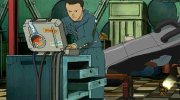



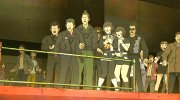
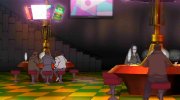
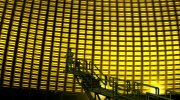
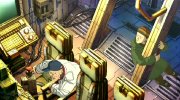
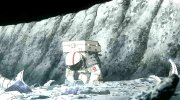
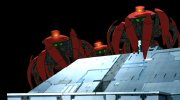










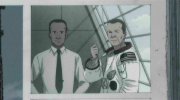
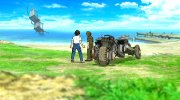
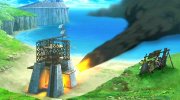

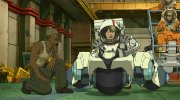
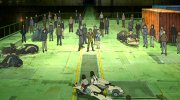



















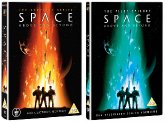














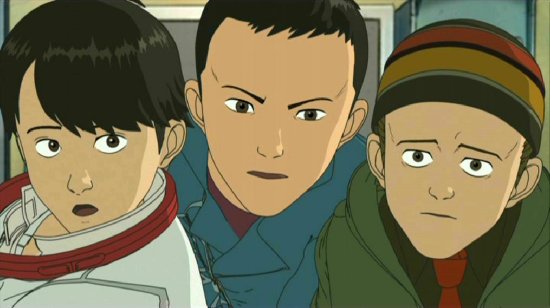





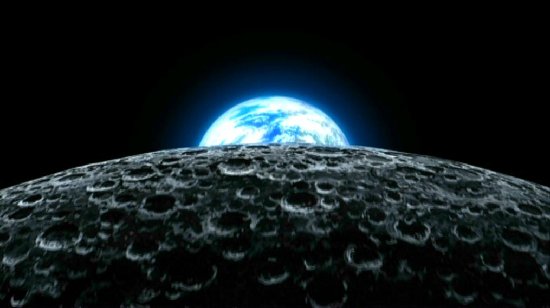


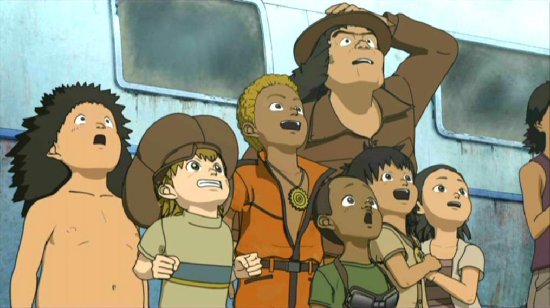

Your Opinions and Comments
Be the first to post a comment!